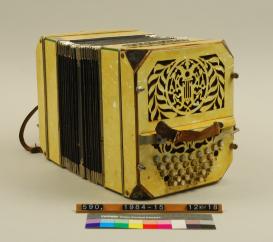This project focused on the period between 1830 and 1950, when instruments were being made with a wide variety of materials and the insights of the burgeoning science of experimental acoustics led to novel experiments and innovations. Investigating the basic materials of musical instruments can bring to light previously hidden connections with neighboring disciplines such as the history of acoustics and materials science. Against this background, fascinating research questions arise: How did the craft of instrument building affect the demands that instruments placed on musicians and the expansion of instrumental capabilities? To what extent can instruments be understood as practical experiments in knowledge production in the field of acoustics? What is the relationship between the materials of instrument construction and the ways that the resulting tone is heard and interpreted? For example, what was the rationale for introducing surrogate materials—such as early plastics—that were otherwise widely found in the objects of everyday life? These questions were explored using the experimental results and written records of instrument makers, official reports on exhibitions, patent specifications, and music reviews.

Bandonion (A. Arnold, Germany ca. 1840) made from different wallboards, celluloid, German silver, ebony, cardboard, synthetic leather, leather, mother of pearl, aluminum, and steel. Inv. no. 1984-15, Photo Deutsches Museum Munich, Archive.
Project
(2015-2016)
